Idea by
Claudio Palavecino Llanos
Call for ideas 2017
No Land
No Land
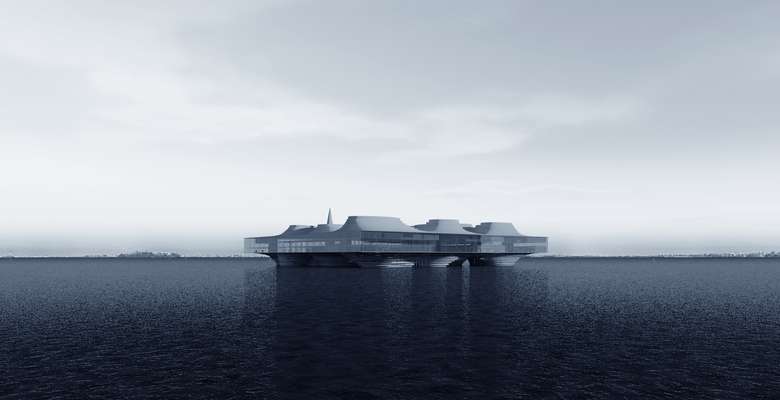
Global warming is transforming the physical environment, our relation with nature and our life. Although there is no consensus about how much the sea level will rise in current century, it’s inevitable that many coastal cities will be severely altered, some of them will be entirely flooded. This phenomenon will redefine cities once flooded ground will make streets, pathways and traditional public spaces disappear. In combination with deployment of fossil fuels; cars and roads will be useless. On-ground built infrastructure will be obsolete.
This new scenario will define a new paradigm of infrastructure over flooded ground, that will reshape the relations between buildings, pedestrians and transportation. These "global warming buildings and cities" will be the basic devices of a new artificial environment.
“No land” architecture is an approach to a new hybrid of architecture, city and artificial landscape that embodies urban life in a multi-layered block adapted to this scenario.

Block / As a system, the block and the buildings are merged into a single volume, a large block raised over the flooded ground. This volume works as a container for multiple activities organized in a wide range of smaller buildings –new and existent ones- which creates a system of programmatic relations between them.
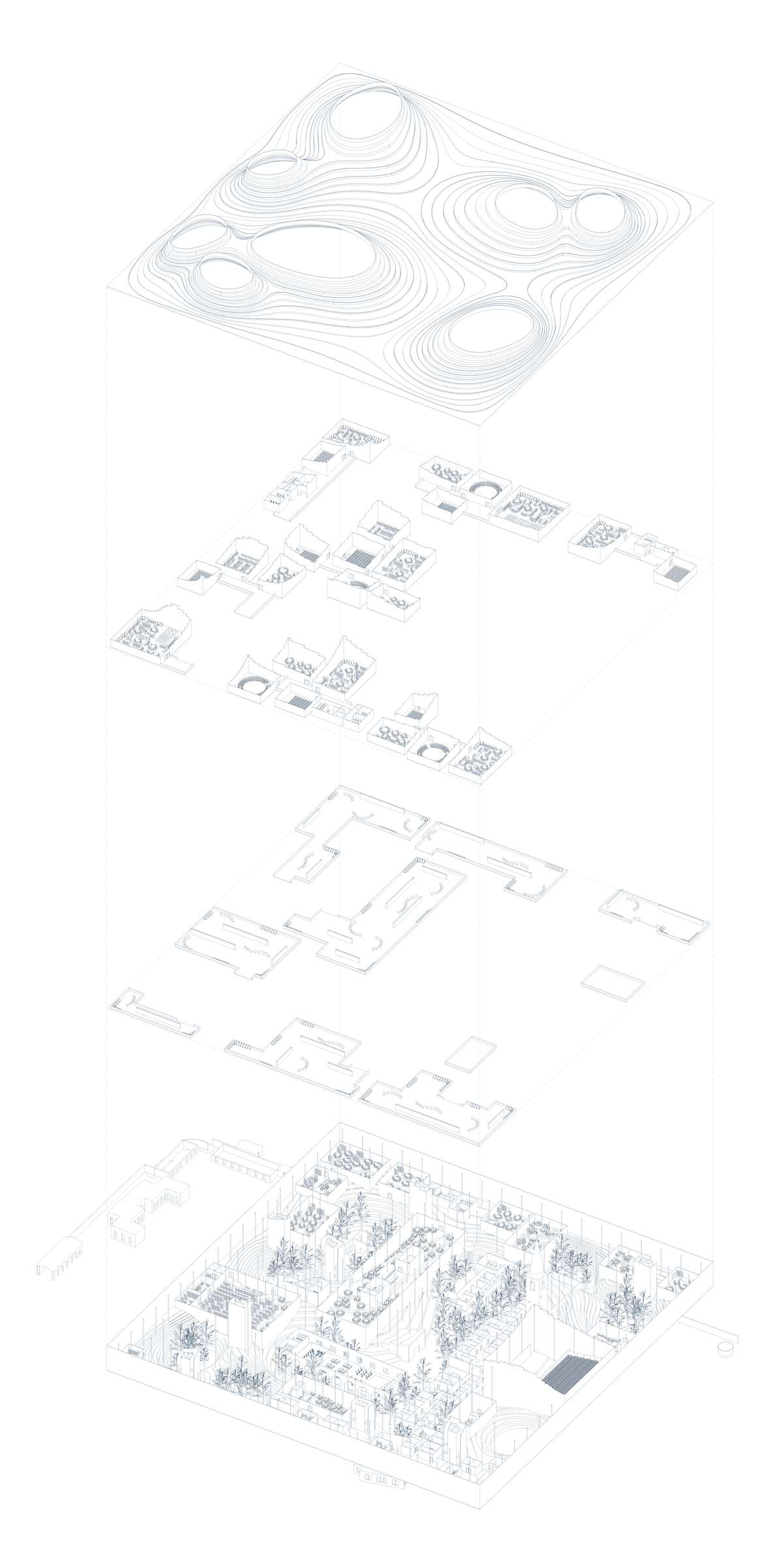
Layers / This system of components is organized in different vertical layers structured by a “double topography”, two stepped sinuous surfaces that define the “floor” and the “roof” of this block. The buildings are attached to the “roof” and the “ground” by creating different spaces, a tridimensional urban fabric.

Topography / The interior topographic surfaces defines a layout of terraces and promenades that interact with the buildings, existing infrastructure and the gaps between them in order to diversify the spatial possibilities of these units as well as it creates a continuous public space.

Interior Landscape / The block is a frame that creates an interior environment, big enough to blur corridors and interior facades in order to mix buildings, trees and the horizon in a layered interior landscape.

New infrastructure / When rising of waters caused by global warming will sink the ground, this “big block” will emerge as an artificial geographic body. A new infrastructural system that rebuilds the traditional components of the city by that rethinking public space, buildings, landscape and water as a tridimensional unity.
No Land
No Land

Global warming is transforming the physical environment, our relation with nature and our life. Although there is no consensus about how much the sea level will rise in current century, it’s inevitable that many coastal cities will be severely altered, some of them will be entirely flooded. This phenomenon will redefine cities once flooded ground will make streets, pathways and traditional public spaces disappear. In combination with deployment of fossil fuels; cars and roads will be useless. On-ground built infrastructure will be obsolete.
This new scenario will define a new paradigm of infrastructure over flooded ground, that will reshape the relations between buildings, pedestrians and transportation. These "global warming buildings and cities" will be the basic devices of a new artificial environment.
“No land” architecture is an approach to a new hybrid of architecture, city and artificial landscape that embodies urban life in a multi-layered block adapted to this scenario.

Block / As a system, the block and the buildings are merged into a single volume, a large block raised over the flooded ground. This volume works as a container for multiple activities organized in a wide range of smaller buildings –new and existent ones- which creates a system of programmatic relations between them.
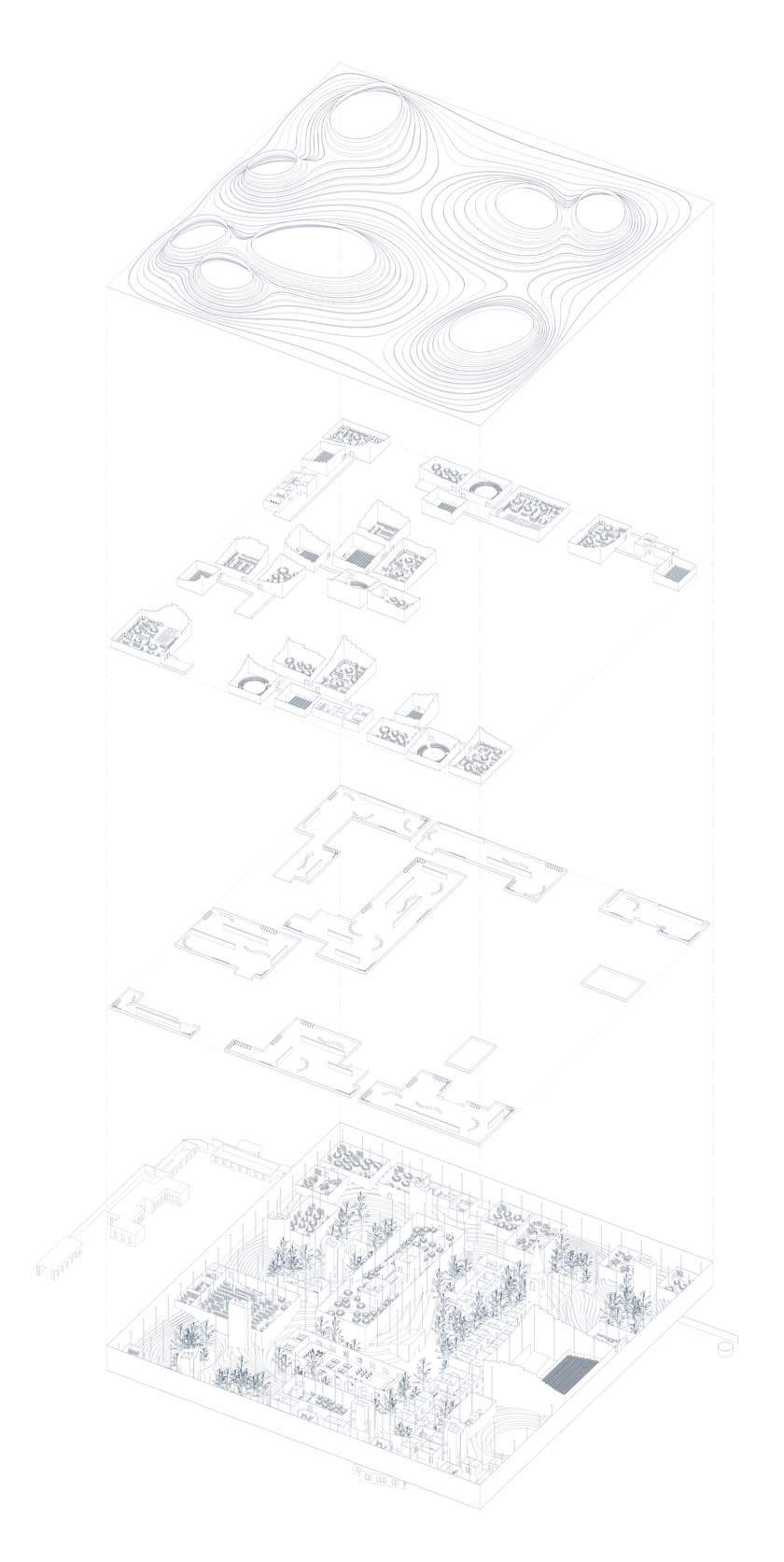
Layers / This system of components is organized in different vertical layers structured by a “double topography”, two stepped sinuous surfaces that define the “floor” and the “roof” of this block. The buildings are attached to the “roof” and the “ground” by creating different spaces, a tridimensional urban fabric.
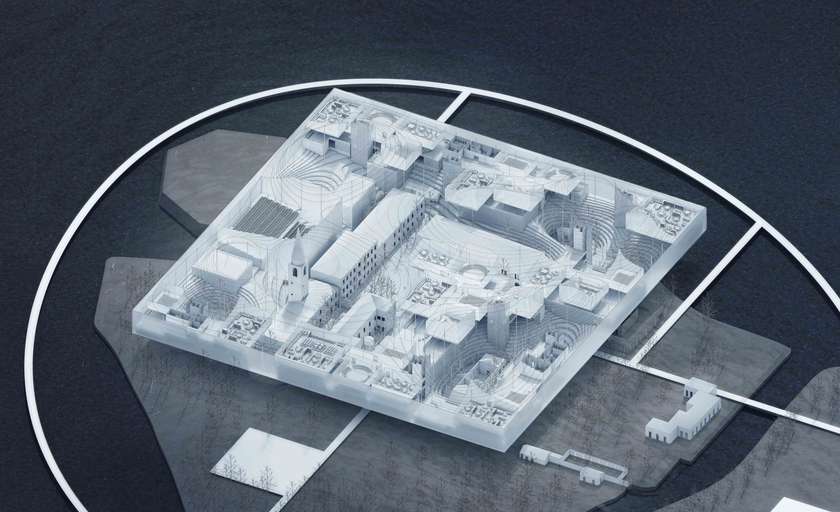
Topography / The interior topographic surfaces defines a layout of terraces and promenades that interact with the buildings, existing infrastructure and the gaps between them in order to diversify the spatial possibilities of these units as well as it creates a continuous public space.
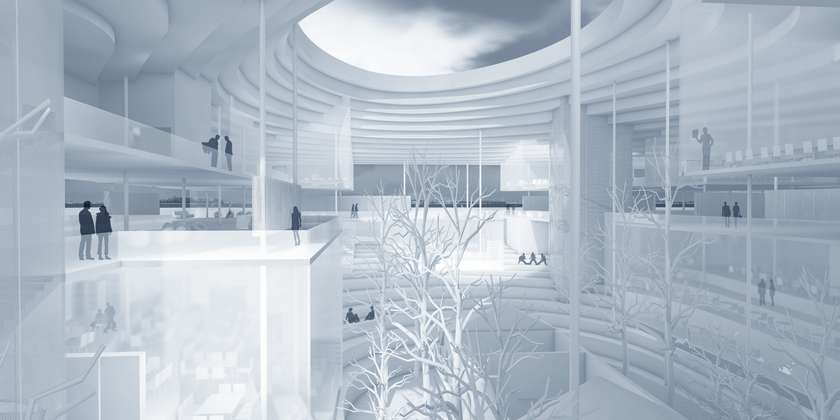
Interior Landscape / The block is a frame that creates an interior environment, big enough to blur corridors and interior facades in order to mix buildings, trees and the horizon in a layered interior landscape.
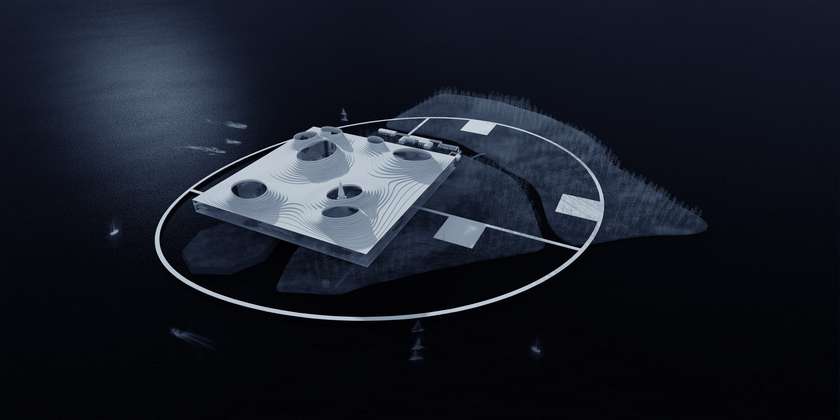
New infrastructure / When rising of waters caused by global warming will sink the ground, this “big block” will emerge as an artificial geographic body. A new infrastructural system that rebuilds the traditional components of the city by that rethinking public space, buildings, landscape and water as a tridimensional unity.